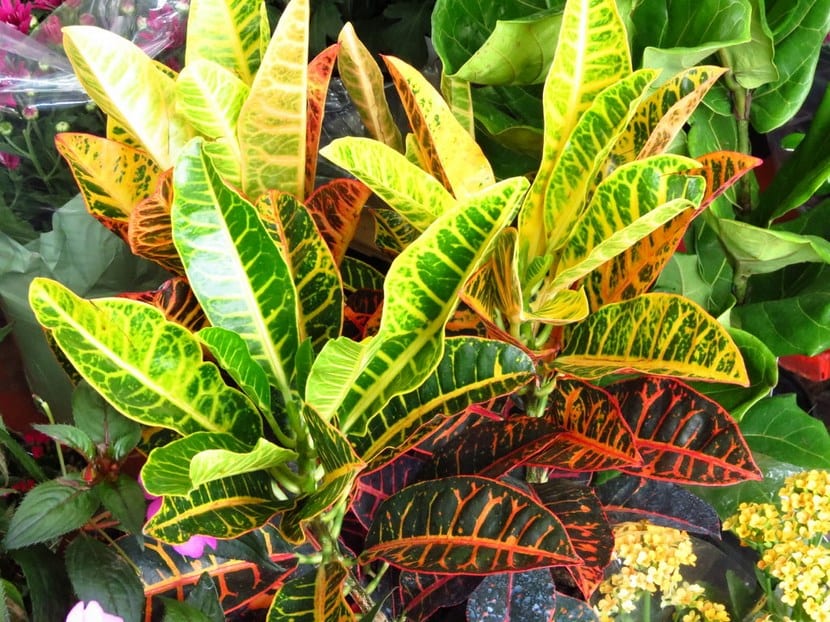
With very characteristic leaves, the croton it is a plant that you can frequently find in gardens. It is beautiful and that is why people choose them because the color of their leaves between green and red is of great ornamental wealth.
The scientific name of this plant is Codiaeum variegatum and it is a species native to southern India, Sri Lanka, Indonesia, Malaysia, although it is also possible to find it in the western islands of the Pacific Ocean.
Description of the plant
The croton is a plant that grows wild in forests and thickets, a species that belongs to the genus Codiaeum, which is part of the family of euphorbiaceae. Its great attraction lies in the leaves, which change between green and reddish according to the season. The plant is an evergreen shrub that shines all year roundIt can grow up to 3 meters tall and has large, thick, shiny leaves.
The flowers grow in clusters, long and well differentiated between the male and female flowers. The former are white and have five petals, while the latter are yellowish and do not have petals.

In addition, there is the fruit, which contains three very small seeds that give rise to new plants.
There are many varieties of croton that vary in the shape of the leaves. The color can change and stain the leaves differently, either through spots on their surface or in the area of the veins or margins.
Croton care
Those who have some experience in gardening know that the croton is a somewhat delicate plant, sensitive to sudden changes in temperature and direct exposure to the sun. That is why you have to attend to their needs to be successful.
The plant does not withstand very cold winters and, in that case, it will have to be in greenhouses. In addition, avoid exposing it to strong air currents, especially if it is dry air.

My croton tree has fungi, I cleaned it and my gardener used an insecticide or I don't know what, but they are still there and those stains do not come out, what do I do ???, the leaves also have bugs.
Hello Barbarita.
It probably has fungus, as you say. To eliminate them you have to use a systemic fungicide sold in nurseries and garden stores, following the instructions specified on the package.
Give it a treatment with the fungicide, and if you can, try to get Neem oil. If you get it, perfect, spray the whole plant with it.
In case you cannot get it, give it a treatment -one week after the fungicide- with a systemic insecticide that contains Chlorpyrifos.
A greeting.
Hello, I am in charge of a condominium and we would like to plant ornamental bushes to beautify the spaces, they told me in a nursery that this croton plant is sunny. here where we live there are problems with the water supply. So this plant is convenient for us because they told me that it requires little water after sowing, it has and the sun is inclement for seasons it is cold until the area becomes cloudy. What can you tell me to help me.
Hi Yubisay.
Here where I live (Spain) the croton is grown as an indoor plant, since it does not resist cold, much less frost. The times I have seen him in the sun, they were not quite right.
It is a semi-shadow plant. It can (and should) be in a very bright area, but it does not have to be in direct sunlight.
With regard to irrigation, it does not resist drought well. It needs to be watered at least twice a week in order to grow well.
A greeting.